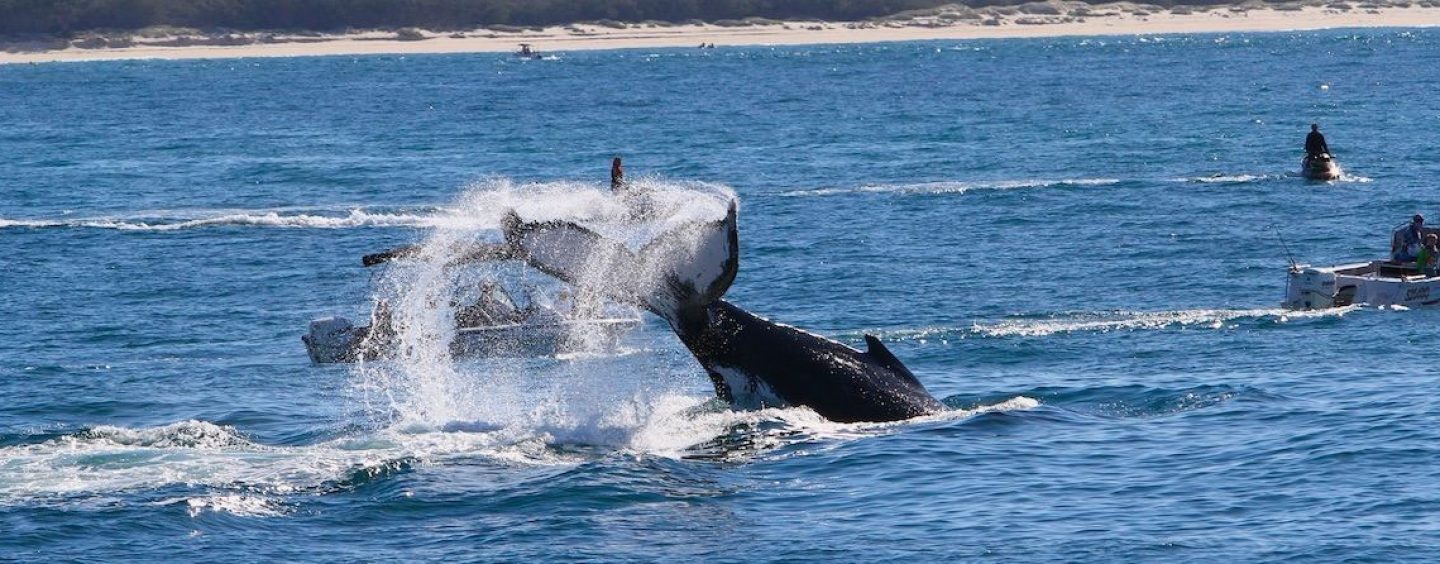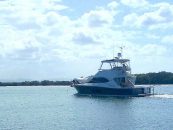The 2017 whale season was a busy time for the 58 volunteers of Humpbacks & High-rises (HHR). For 120 days from June to November, HHR volunteers surveyed 623 individual whales over 250 survey hours. We also observed a minimum of 290 dolphins on 49 occasions, four hammerhead sharks, two unidentified sharks, and nine turtles.
In the past seven years, HHR surveyed 2,939 individual humpback whales describing in detail their behaviour, movement and conditions. Around 230 trained volunteers have collected data over a period of 580 survey days and 919 survey hours. More than 75,000 images of whales provide a photographic database and allowed the extraction of 4,800 fluke images. These images are used to identify individual humpback whales.
The data are being analysed for trends such as location where animals are sighted, their behaviour, and any signs of injuries or sickness. We can then put forward to the government any concerns or changes that are needed to protect the whales and dolphins better.
All volunteers have to attend a training seminar before they can jump on board. They are each provided with a survey kit that is fitted with an iPad, binoculars, stopwatch, camera, and GPS unit. Data are being recorded during the whale-watch trip and then entered into an app on the iPad. All volunteers are rostered for each month. We had an average of 50 volunteers each season, and some have come from various countries. We are also supported by a number of whale-watch cruise operators, such as the Spirit of the Gold Coast, Whales in Paradise, and Whale Watching Gold Coast.
Some of the 2017 highs and lows include the sighting of Migaloo during his northern and southern migration, dwarf minke whales, southern right whales, killer whales, and false killer whales. We also had the highest number of stranded humpback whales on record on the east coast of Australia. This is reflected by five newborn humpback whale calves that died within a few weeks on the Gold Coast, six whales that were entangled in shark nets, and five stranded in the local waters.
From August until October last year, we have recorded a high number of mother-calf pairs to the north and south of the Seaway, and particularly in the morning, these animals would cross the Seaway entrance. We witnessed a twin-hull recreational fishing boat, driving at full speed, getting airborne when it collided with a female humpback whale. The whale sustained injuries but continued its journey south with its calf, and the vessel stopped and then continued as well. This situation could have easily resulted in a deadly accident. We have warned that collisions with whales cannot be ignored and need to properly managed in the Gold Coast waters. The area is a resting and emerging calving ground and we have very high boat traffic density in the region.
There are clear and strict regulations in place such as, keeping a 100m distance from whales at six knots, and if there are already more than three boats in the area, the distance of the other boats should be 300m. It is important to use common sense. If there are many boats in the area, the underwater noise is high and the whales may not know exactly where each vessel is. Driving slow when whales are sighted in the distance and keeping a steady course will help to avoid collisions. We often see boats or jet skis turning and doing circles as well as following the whales closely. This can be disturbing for the whales and makes it difficult for the animal to locate the position of the vessel.
In 2017, during our surveys, there have been 12 reported negative responses by whales and 22 breaches of regulations by watercraft. A dredge that was in operation for four months during the whale season also caused reason for concern. Initial survey results suggested avoidance behaviour in areas where the dredge was operating.
Whale behaviour and dolphin behaviour can be very complex. They are highly intelligent marine animals and their next move is not always predictable. But we can learn a lot about them just by watching them swim around boats and how they interact with the boats and with each other. Everyone should take the time and put a little effort into trying to understand these amazing creatures. We all would like to be able to share the ocean with them in the future.
Humpbacks & High-rises is a community based not for profit organisation dedicated to the research and protection of marine mammals, running Southeast Queensland’s largest marine mammal monitoring program for the past seven years from the Gold Coast. To participate and help collect data, visit humpbacksandhighrises.org.
Rules for Watching Marine Mammals: ehp.qld.gov.au.



























